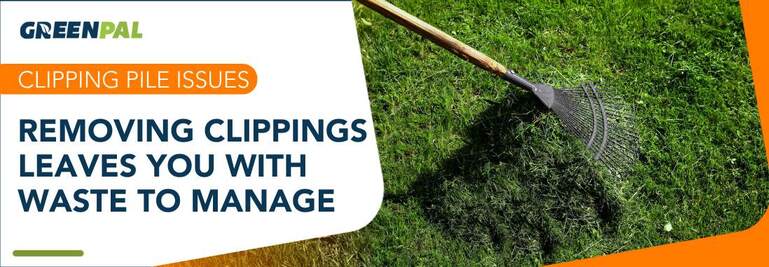Should I bag my lawn clippings? Is it worth all the extra hassle??

As a long time caregiver of the some of the best lawns around, I have had a lot of discussions with homeowners and myself about the best way to handle grass clippings.
Should you remove your mowed grass off of the lawn?
Should you leave the grass where it is cut?
What is the best way to handle cut grass?
Well, today we will take a look at what some of the best ways to handle your grass clippings.
Surprisingly, grass clippings are more useful than you may think.
Method #1 Leave the Lawn Clippings
Leaving lawn clippings after the lawn has been mowed has some benefits that you may not have considered, but there are certainly some drawbacks to leaving them too.
Most people don't know this but, one of the biggest misconceptions about leaving lawn clippings in the yard is that it will lead to thatch. As long as you mow regularly grass will not lead to thatch.
But there is a catch...
Cons: There are definitely a few downsides to leaving clippings in your lawn. For one, you may find that clippings are ending up in your home. Whether the clippings are dragged in by pets, the wind, or yourself, some people may find them annoying. If you are using a side discharge lawn mower, be sure not to blow your grass on the road, as it can be a hazard for motorcyclists.
Worst of all, if your lawn has not been properly maintained, or you cut your grass a bit long leaving cut grass in the lawn can have a detrimental impact on the lawn. Leaving piles of grass in the lawn, even small ones is an absolute "no no" as it will choke out the grass below within only a day or two.
Pros: One of the biggest pros of leaving the clippings on the lawn, is that it keeps your nutrients in the lawn.
On the bright side, grass clippings are high in nitrogen which is important for maintaining a healthy lawn. Of course, you can add fertilizer more often, but why not use the clippings when you can? If you do leave the clippings, you should definitely mulch them in.
Method #2 Remove the grass from your lawn
So what happens if you remove the clippings?
Let’s find out.
Cons: One of the most obvious problems, is what to do with a pile of grass clippings. Whether you bag up your clippings, or leave them in piles and rake them up you are left with a pile of natural material that you have to use or get rid of.
Here's the deal, if you have enough land to throw them in the woods, then it’s not that big of a deal. On the other hand, if you don’t have woods or gardens, you have a pile of grass to get out of your way.
Pros: For gardeners, there are certainly great benefits to collecting clippings and turning them into compost. As mentioned earlier, grass clippings are loaded with nitrogen and other nutrients which can be a great base for a compost mixture. If you do bag them, be sure to compost your grass clippings.
It gets better, you can also use the collected clippings for other purposes as well, here is a great article on that. Additionally, you won't have the hassle brought about by grass clippings floating around your home, walkways, and porches.
What Should I Do with Bagged Grass Clippings?
Bagged grass clippings can be composted, providing a rich source of nitrogen for your garden. Alternatively, they can be used in mulching or disposed of responsibly if you don't have composting facilities.
In My Experience

I have been the caregiver of the best lawns around, however, these are my opinions. I believe that bagging the lawn is a matter of preference. Bagging offers a more beautiful end result, however, the drawbacks are that it's more labor-intensive, takes more time, and if the lawn waste is not recycled then it goes right into the landfill.
On one hand, some experts believe that bagging is a must as it helps reduce thatch, while others will tell you that mulching the clippings back into the turf adds a natural source of nitrogen and fertilizer. Again, I believe it comes down to preference.
While I was in the business, I had some customers that required the lawn be bagged each week, those jobs usually took twice the time and labor to complete versus the lawn I mowed where we discharged the clippings, and mulched them up.
I can honestly say that in 15 years mowing lawns that I noticed a difference in the health of the lawns that we bagged vs the ones that we did not bag.
But here's the deal, the bagged lawns always looked noticeable more manicured, and the striping is more defined, leaving a more crisp appearance.
So if you are a do it yourselfer it comes down to is it worth the extra backbreaking work for you to bag the clippings and dispose of them each week to attain the better-looking result… well, that’s up for you to decide.
How Much Extra Work is Involved in Bagging Lawn Clippings?
Bagging lawn clippings can double the time and labor compared to mowing where clippings are discharged and mulched.
Do I Need a Special Mower for Mulching Grass Clippings?
If opting for mulching, a mower equipped with a mulching feature is ideal for finely cutting and evenly distributing clippings.
Final Thoughts: Is It Worth the Extra Effort?
Deciding whether to bag lawn clippings or leave them on the lawn depends on various factors. Leaving clippings can add nutrients back to the lawn but may lead to mess and thatch if not managed properly. Bagging clippings results in a neater appearance and useful compost material but requires more effort and has environmental implications if not recycled.
Ultimately, the choice depends on personal preference, lawn care goals, and willingness to handle the extra work or potential mess.





 Share
Share












